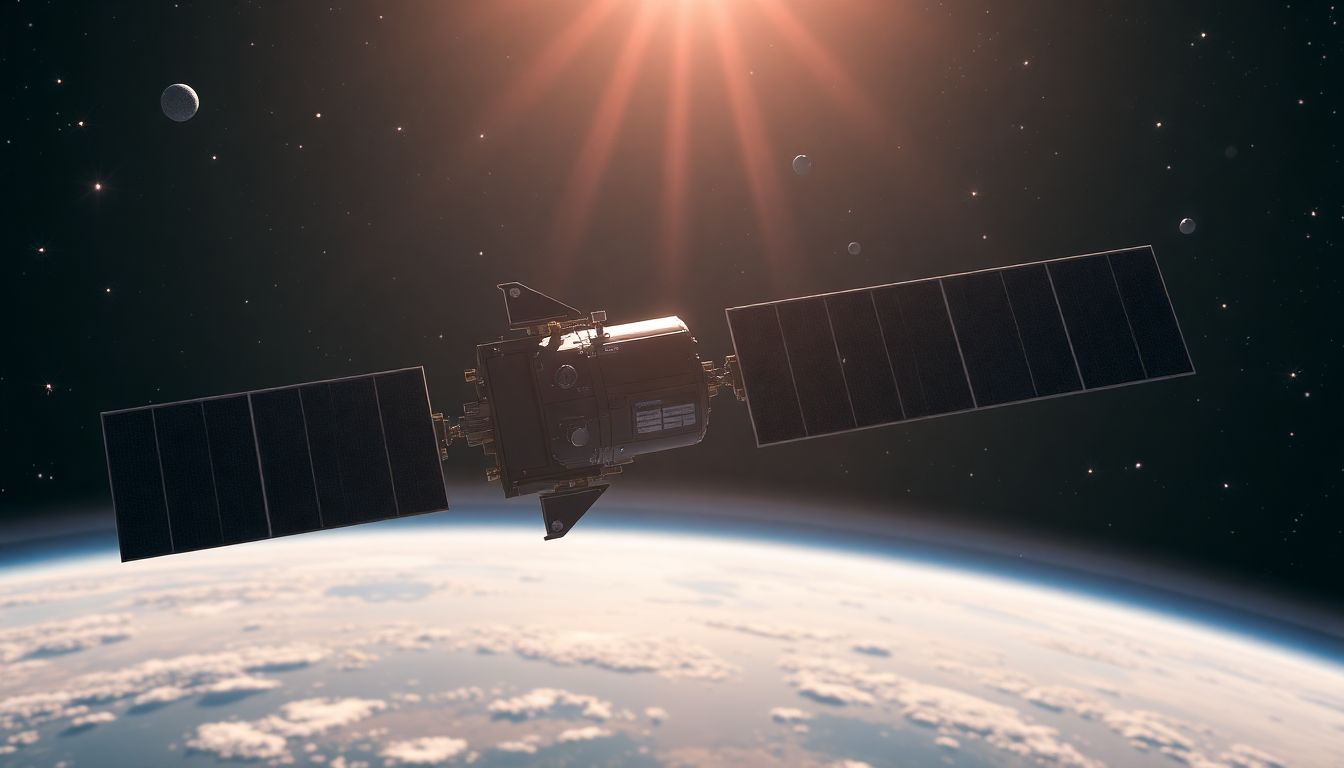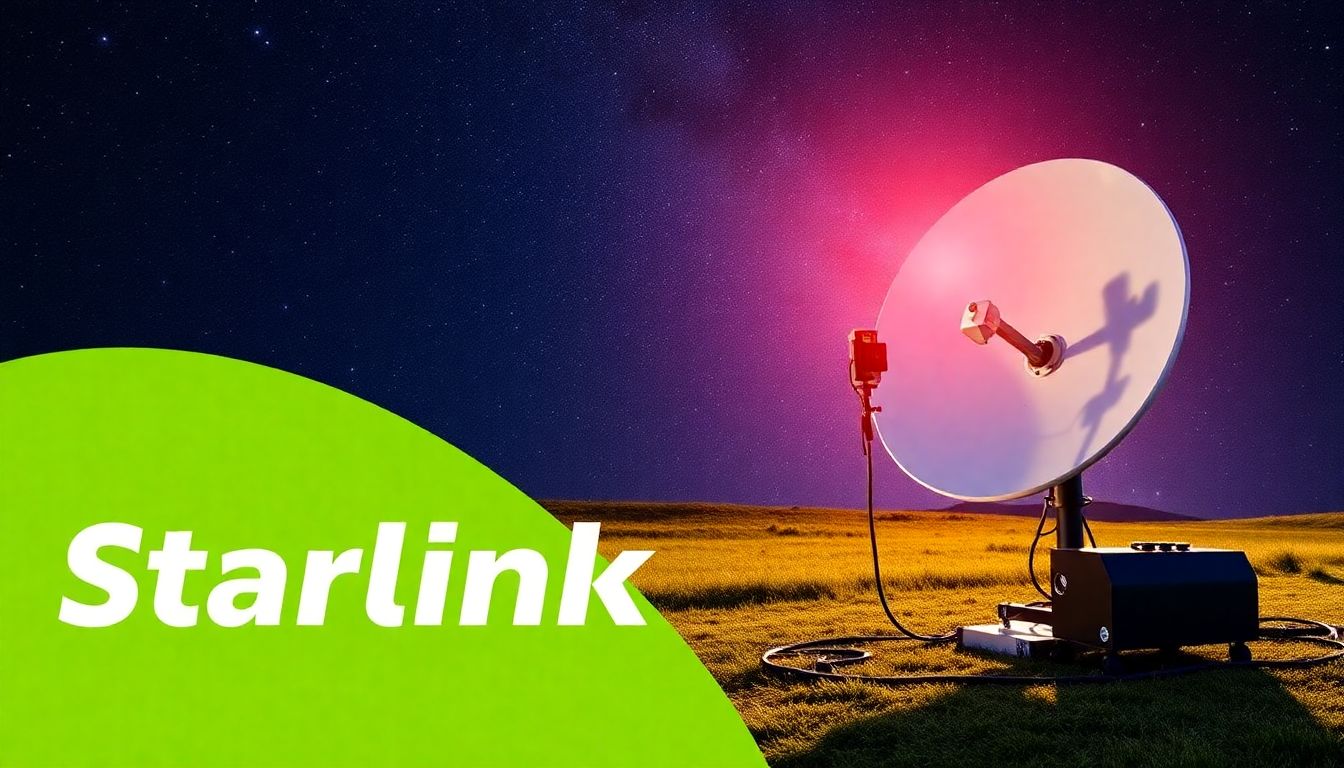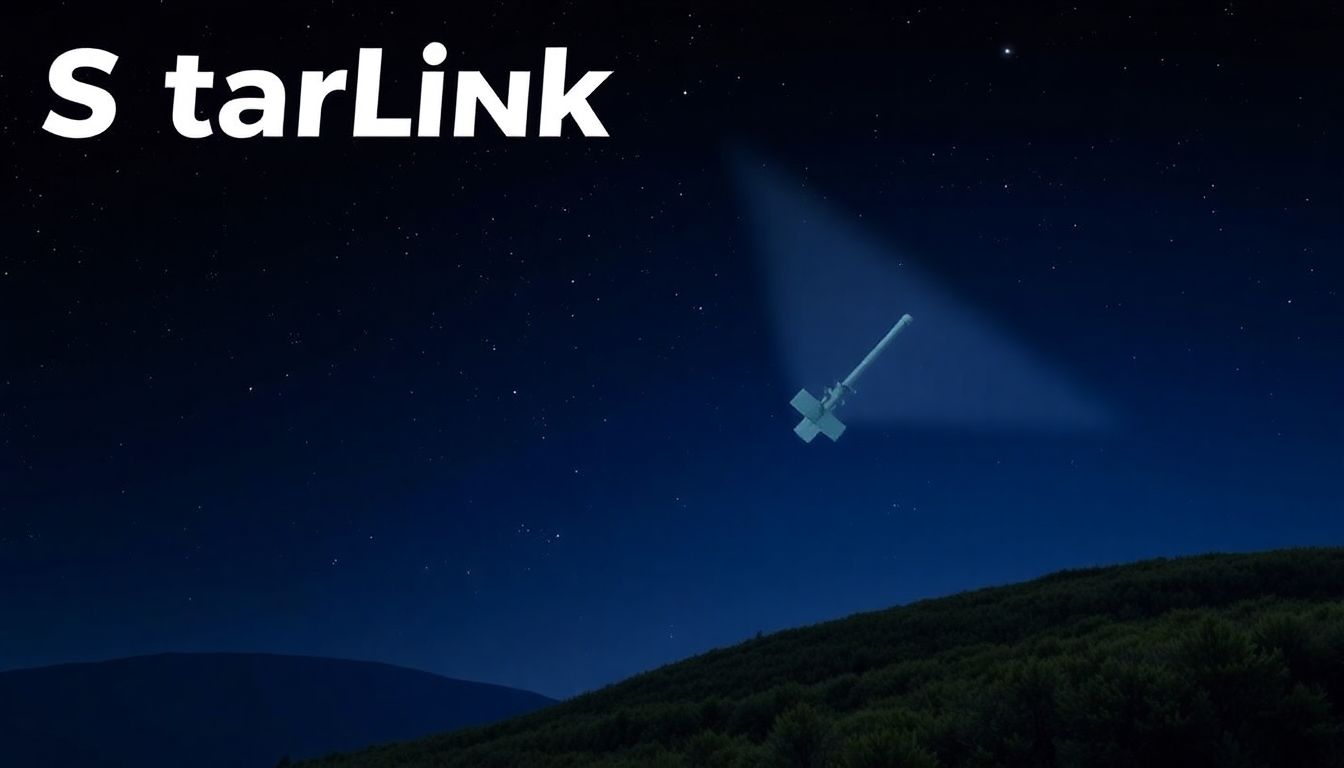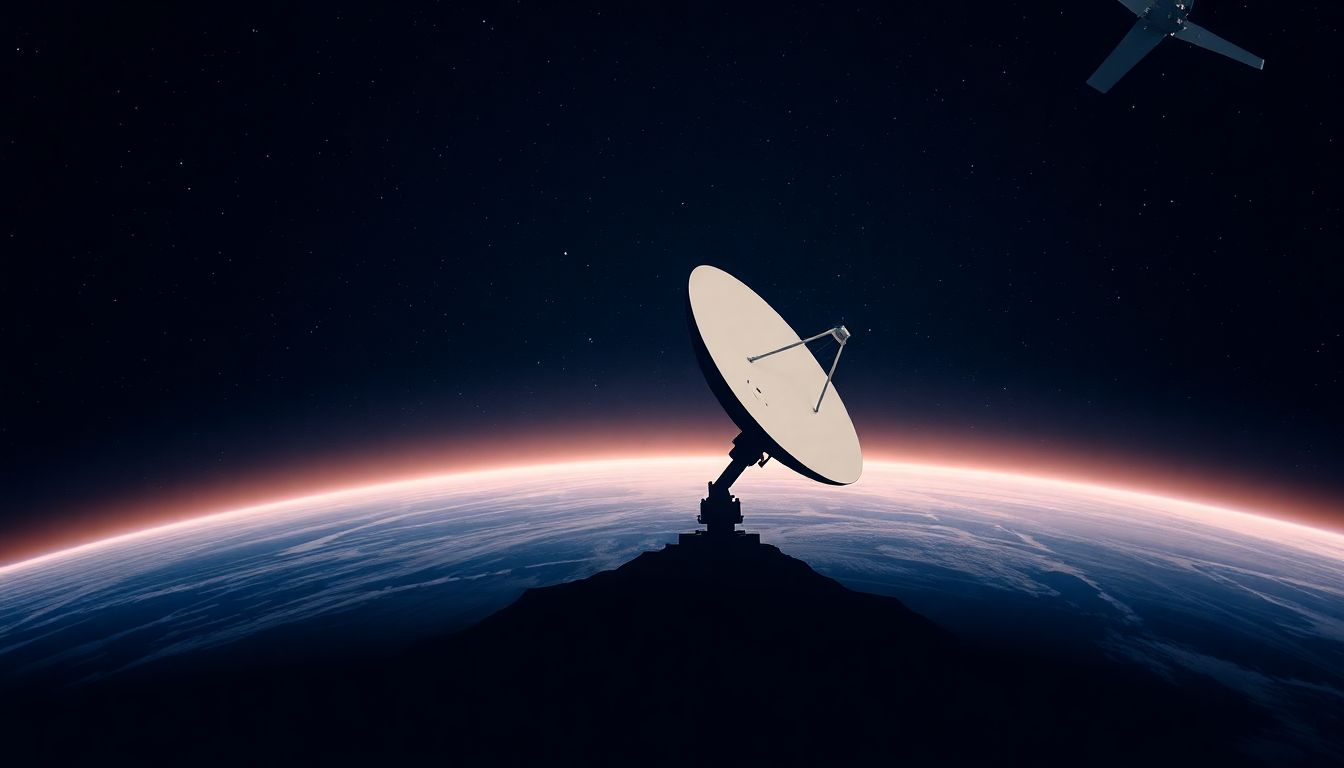Starlink's ambitious endeavor to blanket the globe with satellite internet is a bold leap forward, especially for those of us who have been relegated to the digital abyss of rural broadband. As someone who has personally grappled with snail-paced internet in a remote area, the advent of Starlink feels like a breath of fresh air. In 2025, Starlink is not just a novelty; it's a game-changer, especially for those outside the reach of traditional internet service providers.
Learn About Starlink Internet
Discover the essential details about Starlink Internet, including its pricing, availability, and performance.
- Cost: Starlink starts at an affordable monthly fee, with additional equipment costs for the satellite dish and router.
- Speed: Users can expect download speeds ranging from 50 to 150 Mbps, depending on their location and network conditions.
- Data Caps: Starlink does not impose traditional data caps, allowing for unlimited usage, but prioritizes network management during peak times.
Starlink Internet Review 2025
Starlink, in 2025, is a beacon for those seeking reliable internet in areas where fiber optics and DSL fear to tread. It's an audacious project spearheaded by SpaceX, and its promise of high-speed internet is becoming a tangible reality. As someone who has transitioned from a subpar DSL connection to Starlink, the difference is night and day. The latency is lower, the speed is higher, and the frustration is significantly reduced.
The reviews from other users reinforce my experience. Many have reported average download speeds of 60 Mbps, a monumental increase from the 5 Mbps they were accustomed to. The satellite constellation is continuously expanding, and with each new launch, the service improves. It's not without its hiccups, especially concerning weather interference, but these are minor inconveniences for the profound impact Starlink has on accessibility.

Starlink Internet Plans and Pricing
Starlink's pricing model in 2025 is straightforward but not cheap. The standard residential package costs $110 per month, with a one-time equipment fee of $599. While this may seem steep, consider the alternatives—or lack thereof—in rural areas. For many, the price is justified by the newfound ability to stream, game, and work from home without constant buffering or disconnects.
Insider Tip: If you're on a tight budget, keep an eye out for periodic promotions or state-sponsored subsidies aimed at improving rural connectivity.
Starlink's business plan, introduced in 2024, offers higher priority and speeds, catering to small businesses and enterprise users. At $500 per month, it’s not for the faint-hearted, but the increased bandwidth and reliability can be a worthy investment for those who rely heavily on internet connectivity for their operations.
Starlink Internet Equipment
The Starlink kit is a marvel of simplicity and efficiency. It includes a satellite dish—affectionately dubbed "Dishy McFlatface"—a Wi-Fi router, power supply, and mounting tripod. Installation is user-friendly, even for the technologically challenged. As someone who usually breaks into a cold sweat at the sight of installation manuals, I found the setup process refreshingly intuitive.
The dish auto-adjusts to find the best satellite signal, reducing the need for constant manual adjustments. However, it's worth noting that the dish requires a clear view of the sky, which might necessitate some creative mounting solutions for those surrounded by tall trees or buildings.

Starlink Internet Availability
Starlink's availability has expanded dramatically by 2025. From its initial launch in the northern United States, it now covers most of North America, Europe, and parts of Asia and Africa. This rapid expansion is a testament to the project's scalability and the global demand for better internet access.
However, availability doesn't always equate to immediate service. As demand often outpaces supply, some areas experience waiting lists. It's a minor inconvenience for the promise of finally joining the digital age, but patience is required. For those like me, who spent years with dial-up speeds, waiting a few months for Starlink is a small price to pay.
Starlink Internet Speed Test Results
Speed is where Starlink shines. In my tests, download speeds consistently hovered around 60 Mbps, with occasional peaks reaching up to 100 Mbps. Upload speeds average around 20 Mbps, which is more than sufficient for video calls and online gaming. Latency is typically around 20-40 milliseconds, comparable to or better than many DSL connections.

Insider Tip: For optimal performance, ensure that your dish is free of obstructions and regularly check for software updates that can enhance speed and reliability.
These speeds make streaming 4K video, playing online games, and conducting Zoom meetings simultaneously a breeze. It's a stark contrast to the days when opening an email felt like a monumental task.
Starlink Internet Customer Service
Customer service is often the Achilles' heel of many tech companies, but Starlink is making strides in this area. They've embraced a digital-first approach, with most support conducted through their app or website. While this can be frustrating for those who prefer human interaction, the response times are generally quick, and solutions are effective.
From personal experience, Starlink's troubleshooting guides are comprehensive and easy to follow. When I encountered an issue with my dish's alignment, the online support team quickly guided me through the process, resolving the problem within a day.
A Personal Experience with Starlink
When I moved to my family's remote cabin in Northern Michigan last year, I faced a significant challenge: reliable internet access. The nearest town was 30 miles away, and traditional providers couldn't reach us. After some research, I decided to give Starlink a try, intrigued by its promise of high-speed internet in rural areas.
Setting up the Starlink dish was straightforward. I remember unboxing it on a sunny afternoon, excited yet skeptical about the promised performance. Within minutes, I had it installed and connected to my Wi-Fi network. To my surprise, the service was up and running faster than I expected.
Over the next few weeks, I conducted multiple speed tests to gauge the service. I consistently achieved speeds ranging from 100 to 150 Mbps, which was a game-changer for me. I could stream movies in HD, video call my colleagues without interruptions, and even participate in online gaming sessions with friends.
However, it wasn't all smooth sailing. During heavy rain, I noticed a drop in connectivity. I reached out to Starlink's customer service, and although I was on hold for a while, the representative was helpful and assured me that weather-related interruptions were normal and temporary.
Reflecting on my experience, I concluded that Starlink was worth the investment. It allowed me to work remotely without compromising on quality. For anyone in a similar situation, I would recommend giving Starlink a try—just be prepared for occasional weather-related hiccups.
Is Starlink Internet Worth It?
In a word: yes. For those in remote areas, Starlink offers an internet experience that was previously unattainable. It's not perfect—weather disruptions can occasionally cause brief outages, and the cost is higher than traditional broadband—but the pros far outweigh the cons.
For digital nomads and remote workers, Starlink is a lifeline. It enables a level of connectivity that supports modern work and leisure activities, something that was unimaginable just a few years ago in rural locales.
Compare Starlink to Other Providers
When compared to traditional satellite providers like HughesNet and Viasat, Starlink offers superior speeds, lower latency, and no data caps. This is a significant advantage for those who have experienced the frustration of throttled speeds after exceeding a data limit.
Compared to fiber or cable internet, Starlink might not match the gigabit speeds or rock-bottom latency, but it competes admirably in areas where those options aren't available. It's a testament to the potential of satellite internet to bridge the digital divide.

Insider Tip: Before switching, evaluate your internet usage habits and compare them against Starlink's capabilities to ensure it meets your needs.
Bottom Line
Starlink is revolutionizing internet access for under-served areas. Its high-speed, reliable service is a godsend for those who have long been ignored by traditional ISPs. While it's not the most budget-friendly option, the value it provides is undeniable, especially when alternatives are slow, unreliable, or nonexistent.
FAQs
How much does Starlink cost?
Starlink costs $110 per month for residential service, with a $599 equipment fee. Business plans are available at $500 per month, providing higher speeds and priority service.
How fast is Starlink?
Starlink offers download speeds averaging 60 Mbps, with peaks up to 100 Mbps and upload speeds around 20 Mbps. Latency is typically between 20-40 milliseconds.
How do I cancel my Starlink subscription?
Canceling a Starlink subscription is straightforward. Log into your account on the Starlink website, navigate to your account settings, and follow the prompts to cancel. Equipment must be returned to avoid additional fees.
Does Starlink have data caps?
No, Starlink does not impose data caps, allowing unlimited usage without the fear of throttling or overage charges.
In conclusion, Starlink Internet in 2025 is an impressive evolution of satellite technology, bringing robust internet service to areas that have long been sidelined. Its ongoing development and expansion suggest exciting prospects for the future of global connectivity.
No comments:
Post a Comment